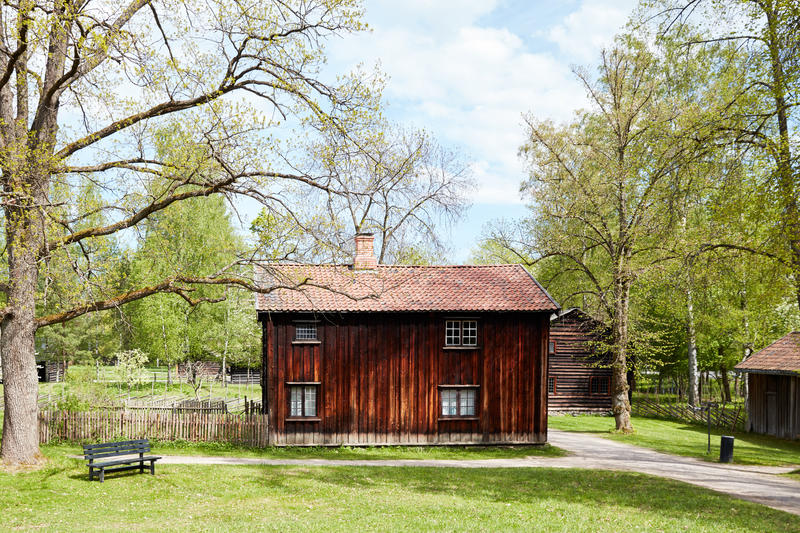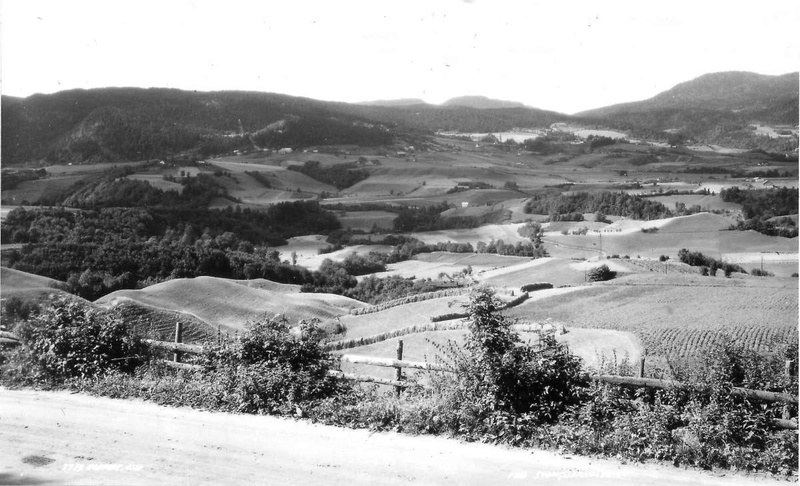- 1/1
Farm House from Løken, Østfold Haakon Michael Harris / NOrsk Folkemuseum
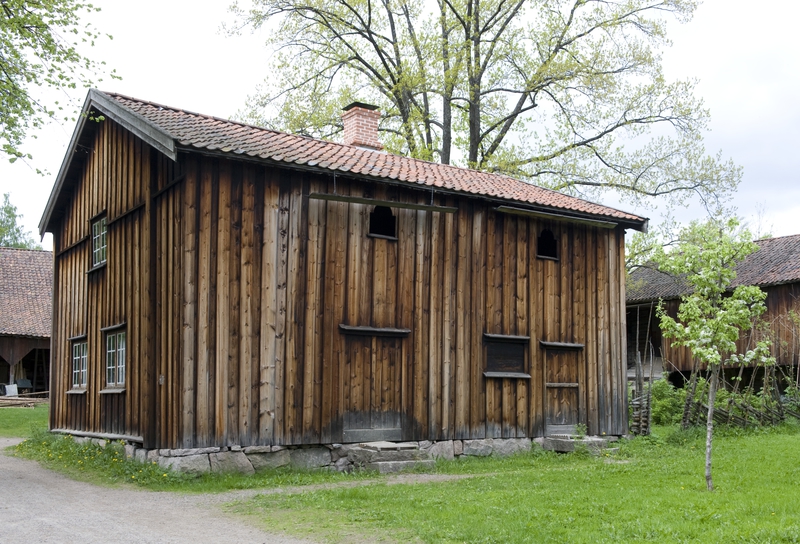
Farmhouse from Lille-Løken (Trøgstad, Østfold, 1769)
This two-story farmhouse has a high gallery on part of the long wall, opening on to the rooms of both stories. Houses of this kind, høgstuer, became common here in the 1700s.
There is a kitchen and a main room on the ground floor, and two rooms on the upper floor. The kitchen fireplace was built on the wall towards the main room where there is an iron stove. The two upper floor rooms are furnished with beds and chests, and were used to store clothing not in daily use.
The building’s original sod roof was later replaced by tiles. The year 1769 carved into the kitchen door probably indicates the year the house was built.
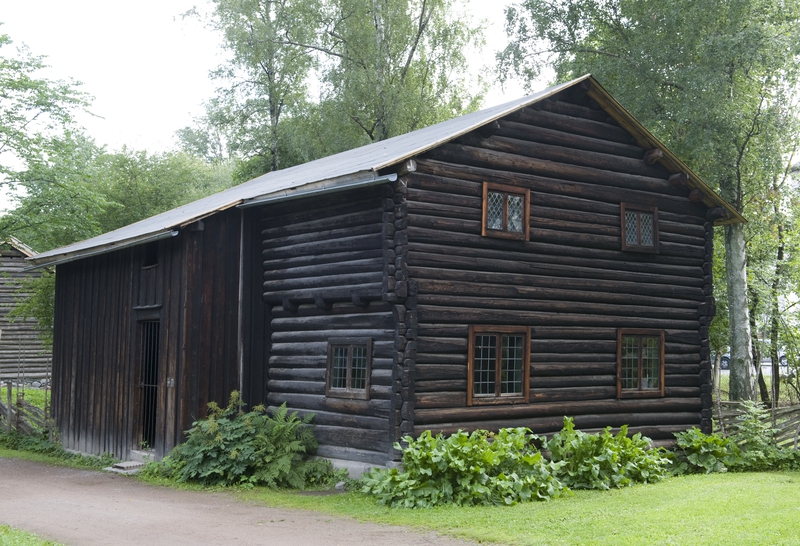
Farmhouse from Smedstad (Gjerdrum, Akershus, 1751)
This three-room building has a gallery along one side opening on to the main room. A door leads from this room into a chamber and a kitchen. The long walls on the upper floor extend out over the lower floor, as was the fashion here in the 1700s.
The main room has been furnished according to regional practices. The fireplaces in the kitchen and the main room share a flue and chimney. Upstairs there are two rooms, a large one over the main room and a smaller one over the kitchen and chamber. The large room, the høgloft, was the farm’s guest room and furnished with beds and chests. Foodstuffs, wool and other provisions were stored in the other room.
The year 1751 is carved into a beam of the main room. This suggests that the house was built while Lars Larsen ran the farm between 1737 and 1773. The house was in use until the beginning of the 20th century. A woman born in 1908 remembered from her childhood that she loved to play and rummage in the upper room where there were old chests full of old clothing.
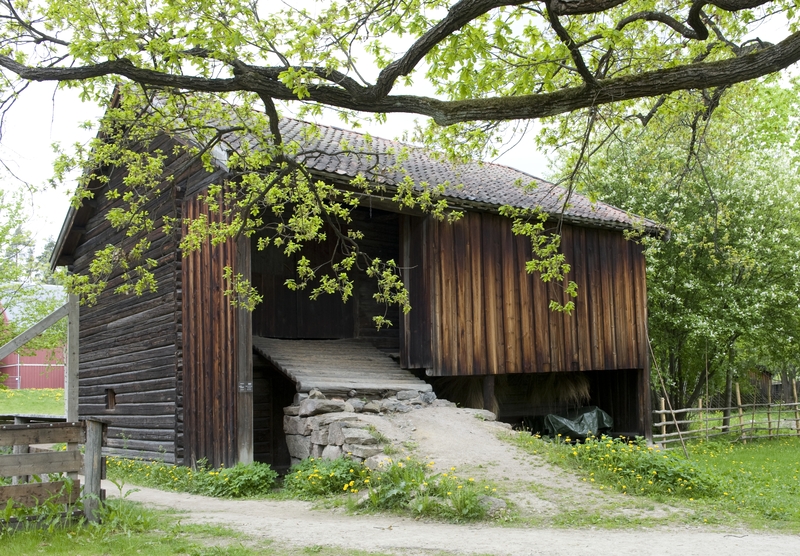
Stable and hay barn from Døli (Nannestad, Akershus, 1800-1850)
This two-room building has a hay barn on one side and stalls on the other. A ramp leads up to the hay loft over the stalls. The stable has good, solid log walls and a floor well insulated with earth and straw.
The horse was most valued of all farm animals. This well-built stable suggests that it was properly looked after during cold winter nights.
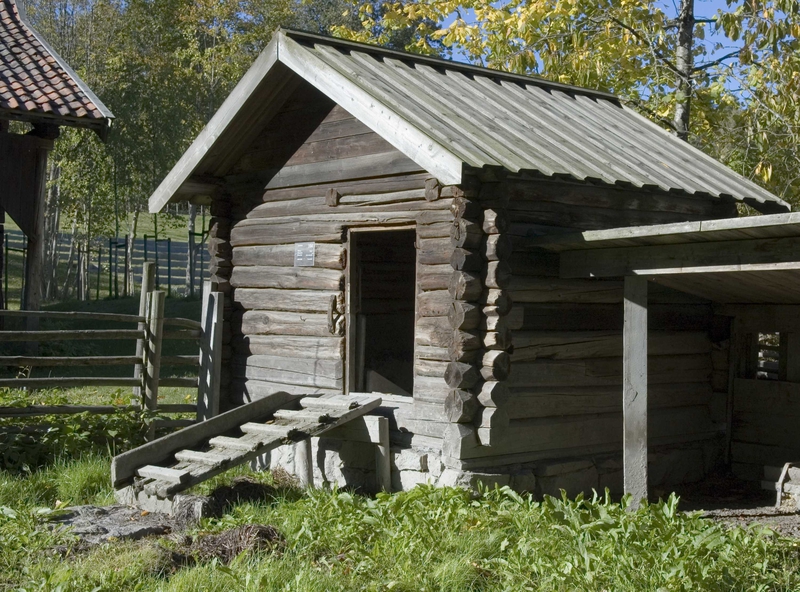
Pigsty from Vilberg (Ullensaker, Akershus, 1850-1900)
Although most farms kept pigs, few pigsties have been preserved. Pork, both fresh and salted, played an important role in the diet.
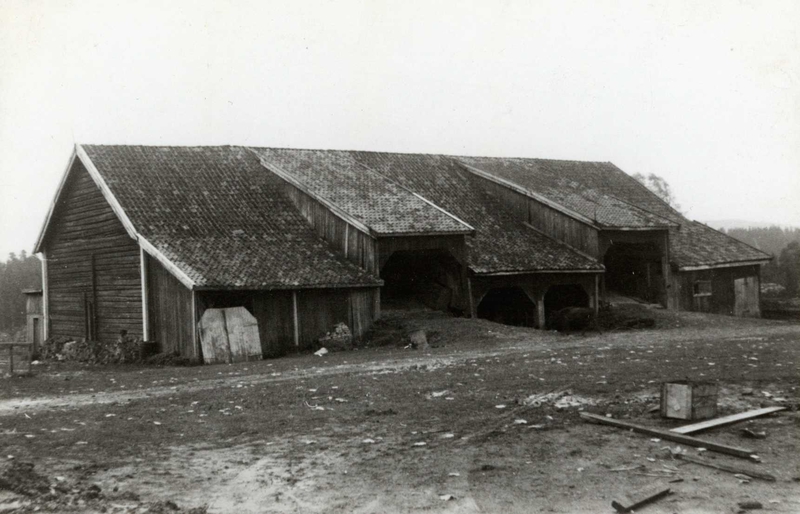
Barn from Garsvik (Aurskog-Høland, Akershus, 1838)
This type of barn has been common on the larger farms of southeastern Norway since medieval times.
The Garsvik barn has two threshing floors, each with its own ramp, and two rooms for storing grain, but one of these rooms was used as a stable. The roof over the two threshing floors was raised in later years giving the barn two «arches» on the front, where wagons and sleighs were stored.
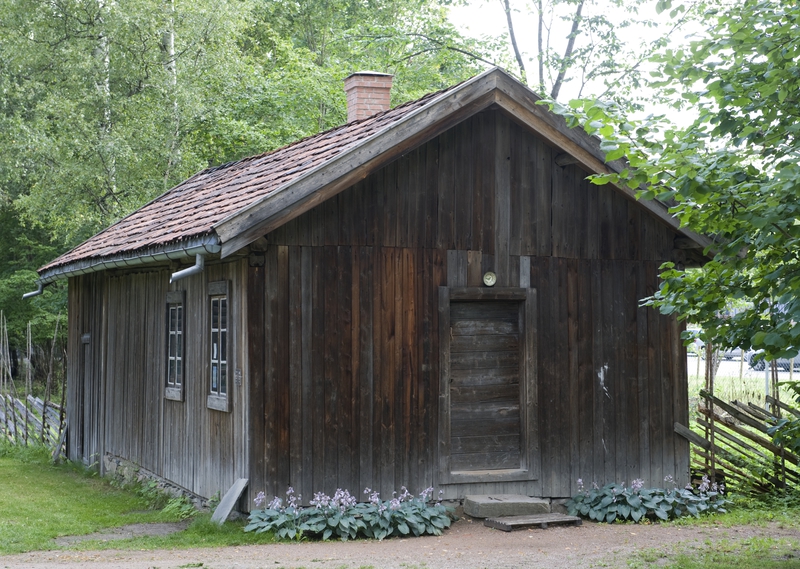
Potter’s workshop from Norum (Nes, Akershus,1860-1870)
The building is a paneled framework construction with two rooms: the workshop and the furnace room. A brick kiln separates the two rooms.
The potter’s wheel, workbench and shelves belonged to the original workshop. It also had a horse-powered clay-milling machine powered for kneading the clay, but this was not moved to the museum.
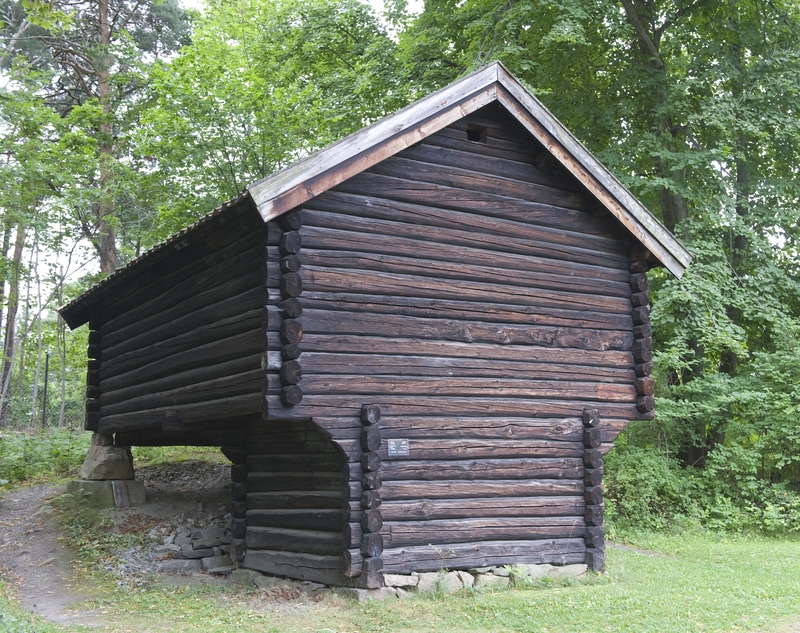
Drying kiln from Karsrud (Våle, Vestfold, ca. 1835)
Grain, flax and hemp were dried in the kiln, or kjona. This one is unusual in having a little hearth in the middle of the ground room floor instead of the more usual stone oven. Drying was done by letting warm air and smoke seep up from the lower room and through the ribbed frames in the upper room on which crops were laid.
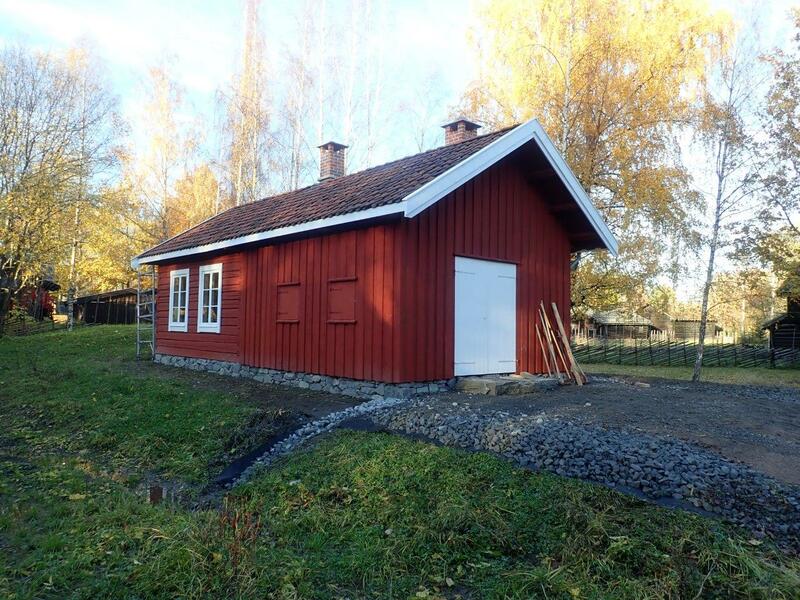
Smithy from Vestre Borge (Skoger, Buskerud, 1879)
The building consists of two rooms, a carpentry workshop and a smithy.
Østlandet
Østlandet is the name given to the eastern region of southern Norway. It includes mountain areas such as Jotunheimen, valleys and forested districts, but is probably most well-known for its excellent farming districts. More than half of Norway’s arable land is situated in this region, which also includes the highest mountains, longest rivers and largest towns in Norway.
Østlandet includes the counties of Akershus, Østfold, Buskerud, Vestfold, Telemark and Innlandet.
